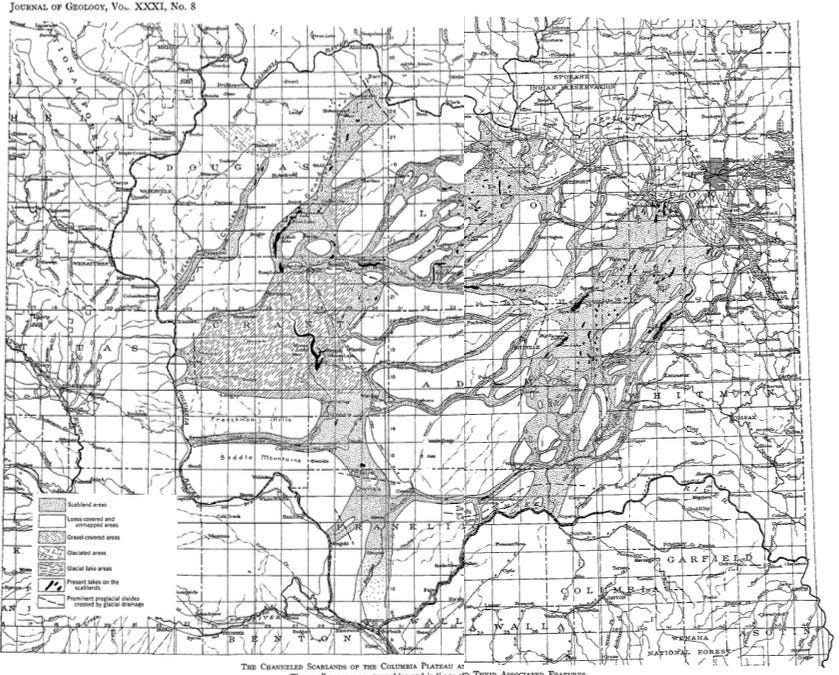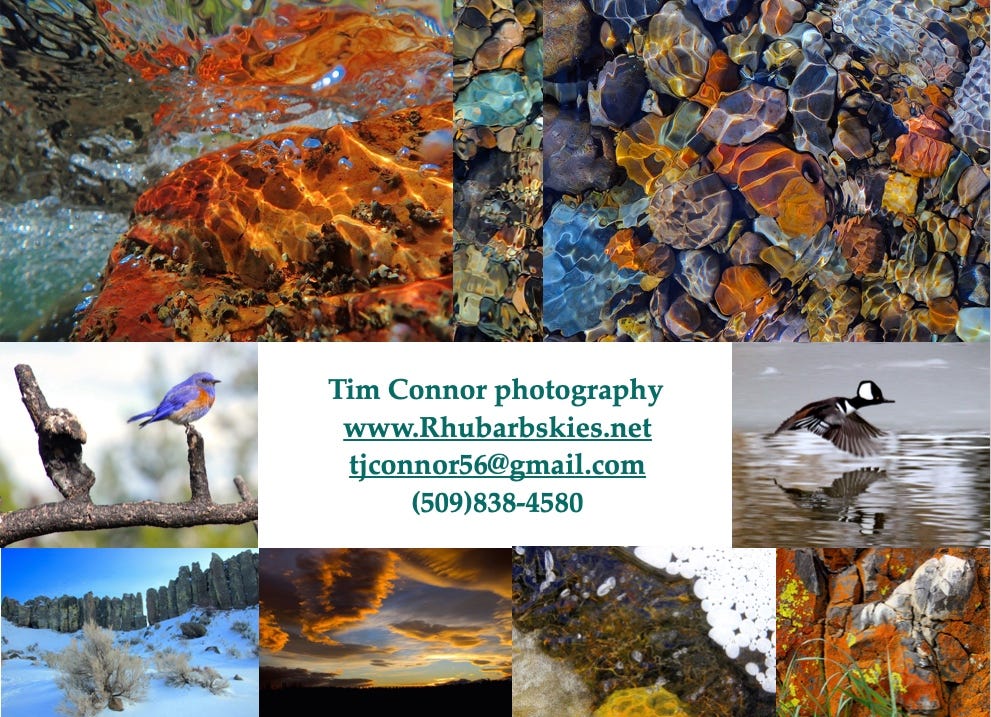Appetizers for Friday’s Spokane Flood Event
I met Central Washington University’s prolific geology teacher Nick Zentner at an event in Moses Lake just a week before the Covid curtain came down. This was in early April 2020.
I brought dozens of my scablands photographs for the Moses Lake Museum’s beautiful gallery space and Nick brought a presentation on the Ice Age floods that he shared in the museum’s large and nearly packed auditorium. It was a fine evening, and I remember that part of Nick’s talk where he mentioned his heightened curiosity about what was happening in Spokane in 1922 and 1923.
With a handful of his students from the University of Chicago, the legendary geologist, J Harlen Bretz, set up shop in Spokane in the summer of 1922, and then again in 1923. Bretz’s meticulous field work in the Washington scablands resulted in two papers, the more famous of which—The Channeled Scablands of the Columbia Plateau—was published in late 1923. In American geology circles it was received as a radical and largely unwelcome assertion—the bold thesis that a massive flood (Bretz named it The Spokane Flood in a 1924 paper) was responsible for such features as Grand Coulee, Dry Falls, the Palouse Canyon and Wallula Gap. Spokane is the darkened square near the upper right hand corner in the famous map the Bretz included in his late 1923 paper referenced above.
Bretz’s aggregated 1923 map of the Channeled Scablands (image courtesy of Hanna Holborn Gray Special Collections Research Center, University of Chicago Library)
Spokane, itself, is built out upon several scabland features and I’ll do my best to illustrate that at the Preposterous Spokane Flood event Friday evening at Hamilton Studio. But what most interested Nick was the role that Spokane science teachers, including several at Lewis & Clark High School, seemed to have played in this drama, by successfully inviting Bretz to Spokane and then assisting him logistically, socially and materially in advancing his most famous work.
We now know much more about Bretz’s visits to Spokane—due in part to the digging of Spokane researchers Richard Solo and Dean Kiefer, but also to Nick’s insatiable curiosity and his own legion of followers who’ve helped him dig deeper into the Spokane story. Richard and Dean’s work is in a fine Westerner’s publication—released in October, entitled Welcome to Our World, Professor Bretz. I’ve interviewed Dean about his work on the project and will share part of what he and Richard learned—via video—Friday evening.
Like almost all of Nick Zentner’s remarkable work, his exploration of the Spokane Flood story is available on-line, and there are literally dozens of hours of it now, including a remarkable interview just a few days ago with the prominent geologist Vic Baker, who met and befriended Bretz when he (Baker) was a graduate student in the 1960s.
Some of you may remember the 2005 NOVA documentary Mystery of the Megaflood, in which Baker is the lead guide to the Bretz story and especially to the science that vindicated Bretz. And Baker would know, since so much of his field work picked up where Bretz (who passed away at the age of 98 in 1981) left off.
Nick’s lengthy interview with Vic Baker is in Episode S, Ambush!, in Nick’s current video series Ice Age Floods A-Z. Nick started the series in early November of last year and adds to twice a week. It’s an amazing tour, and includes, two additional episodes that dig deeply into the Spokane story.
Hope to see you Friday night at Hamilton Studio, doors open at 6 p.m. and I’ll begin the presentation at 7 p.m.
Here’s the link to the video preview/invitation. Please share…
—tjc








